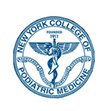Sever’s Disease
What is Sever’s Disease?
Sever’s disease is a painful inflammation of the growth plate in the heel. Growth plates are the end of bones in children, which undergo change and promote bone growth. During this growth phase, the bones grow faster than the surrounding muscles and tendons, causing tightness of the muscles and tendons, and pressure at the back of the heel. With proper treatment, Sever’s disease usually resolves within 2 months with no long-term effects on the child.
Sever’s disease, also called calcaneal apophysitis, is a condition that affects growing adolescents, causing swelling and pain at the back of the heel. The inflammation occurs at the point where the Achilles tendon attaches to the calcaneus bone (the large bone that makes up the heel of the foot). Sever’s disease is a common cause of heel pain in physically active children in the early part of puberty, usually between ages 9-14.
Causes of Sever’s Disease
Sever’s disease can be caused by the following:
- Repetitive stress resulting from sports activities that involve running and jumping
- Standing for extended periods of time, causing constant pressure on the heel
- Poor fitting shoes and improper footwear
Risk factors for developing Sever’s disease
- Physically active children at the onset of puberty who are involved in running and jumping activities are at an increased risk of developing Sever’s disease.
- Short leg syndrome, a condition where one leg is shorter than the other, can cause pulling of the Achilles tendon, leading to Severs.
- Being overweight creates more pressure on the growth plate.
- Flat arches, high arches or pronated foot, where the foot rolls inward, can cause tightness of the Achilles tendon, thereby increasing pressure on the heel.
Symptoms of Sever’s disease
- Pain in one or both heels, usually at the back
- Difficulty walking, walking with a limp or walking on tiptoes
- Heel may appear red, swollen and warm
- Pain when heel is squeezed on both sides
- Symptoms improve with rest and worsen with activity
Diagnosis of Sever’s Disease
Your physician will diagnose Sever’s disease based on medical history and physical examination. Your doctor performs a physical examination of the heel to assess for swelling, redness and localized tenderness. Your doctor may perform a squeeze test to assess pain when squeezing the back part of the heel from both sides.
Although Sever’s disease cannot be diagnosed using X-rays, your physician may order them to rule out other problems such as a fracture.
Treatment of Sever’s Disease
The goal of treatment is to relieve the pain. Treatment options include:
- Rest: Any activities that cause heel pain should be stopped until the pain resolves. Adequate rest relieves pressure on the heel bone reducing swelling and tenderness.
- Ice or cold packs: Ice wrapped in a towel should be applied to the injured heel for 20 minutes, 3 times a day to reduce swelling.
- Compression: Elastic wrap or compression stockings may be used to help reduce the swelling and pain. Elevating the heel above heart level also helps with the swelling.
- Exercises: Calf stretch, heel cord stretch and hamstring stretch are performed to stretch, and strengthen the leg muscles and tendons on the back of the leg. These should be done 2 -3 times a day, holding each stretch for 20 seconds.
Strengthening exercise using a bungee cord or rubber tubing is also performed 2-3 times a day to strengthen the muscles on the front of the shin. Your child should sit on the floor keeping the affected leg straight. One end of the bungee cord is tied around a table leg and the other end around your child’s toes. Then, your child moves back just far enough to stretch the cord. The foot is slowly bent towards your child’s body, and then the foot is pointed towards the table in the opposite direction.
- Medications: Over the counter NSAIDs may be prescribed to reduce pain and swelling. Never give children aspirin due to risk of a serious illness called Reyes syndrome.
- Orthotic devices: Orthotic devices such as heel pads, heel lifts or heel cups are recommended in children with pronated feet, and flat or high arches. These provide cushion to the heel and reduce the strain on the Achilles tendon. In severe cases, a short leg cast may be applied for 4 to 6 weeks to immobilize the foot so that it can heel.
Sever’s disease can be prevented with the following recommendations:
- Wear good quality, well-fitting shoes with a shock-absorbent sole to reduce pressure on the heel
- Avoid heavy or high heeled shoes
- Avoid excessive running on hard surfaces
Stretching exercises and ice application should be continued after sports activities to prevent recurrence of Sever’s disease.



